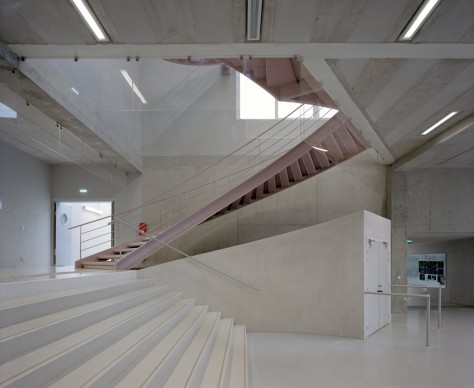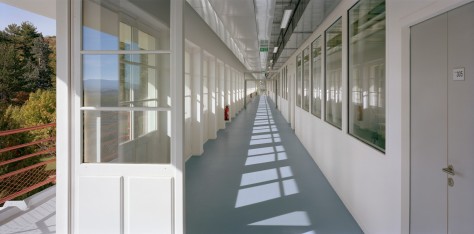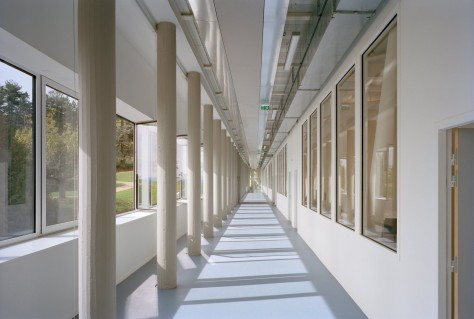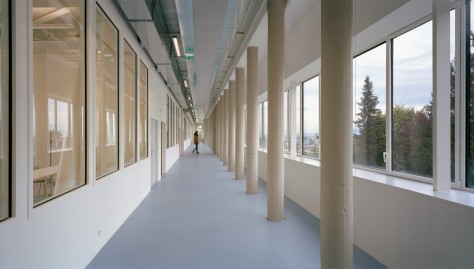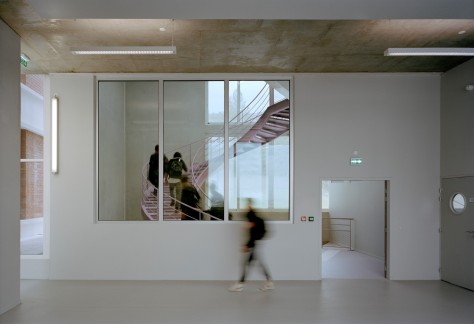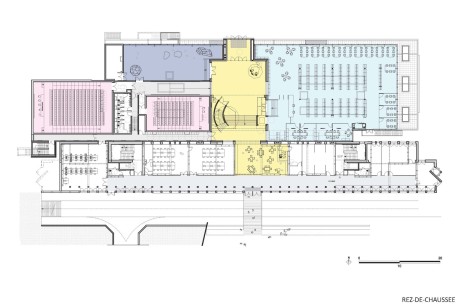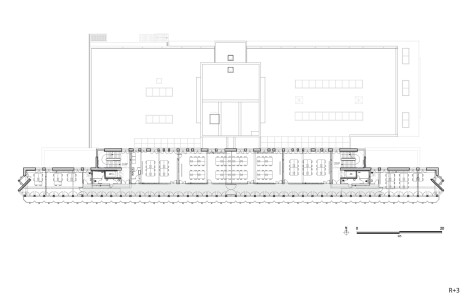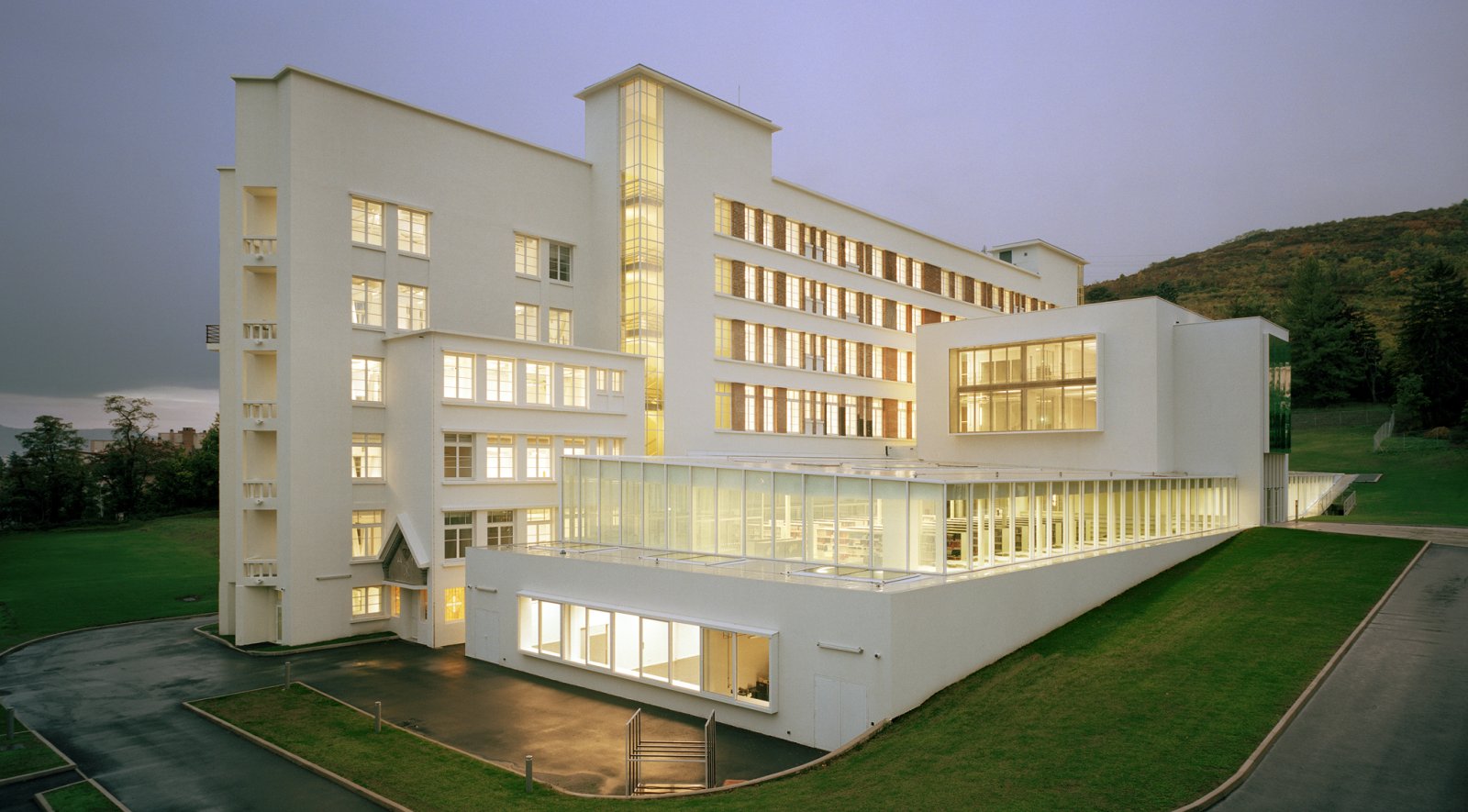
The task was to transform a sanatorium, built in 1930’s, into a School of Architecture. The Sanatorium is a perfect example of functional architecture, and it has to change radically its function.

In order to preserve the rational spirit of the existing building and to create a model of a coherent architecture for the future students, our project becomes a pure reconversion: we restated the main architectural concept of the Sanatorium. The project consists of 5 points:

1 – The building is isolated in a vast landscape. This ideal relationship between construction and nature is restated. Nature regains its unity, it surrounds the building and, linked to the landscape, it acquires a territorial dimension.

2 – At times, the sanatorium isolated the patients; today, it hosts social activities. The essential student gatherings are located on the ground floor in connected spaces.

3 – The sun was the reason of existence of the sanatorium that was oriented towards the south. We interpreted this distinctive feature: The main entry, situated on the North façade is no longer considered as a back shadowy side of the South façade.
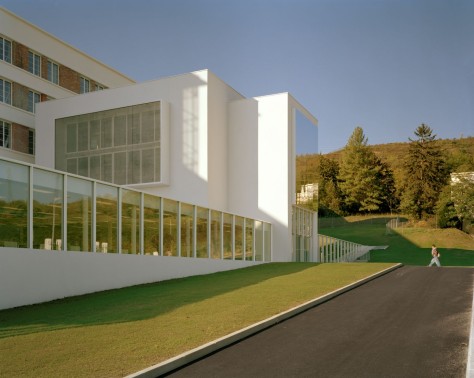
It receives the sun thanks to a monumental mirror that reflects the illuminated landscape. On each level, the horizontal circulation is placed on the South side of the building and serves as a thermal barrier protecting the studios from the sunlight.

4 – The narrowness of the building becomes of a use. On each level the main circulation is placed along the South side of the building. One can enjoy an exceptionally open panoramic view taking the long walkway.
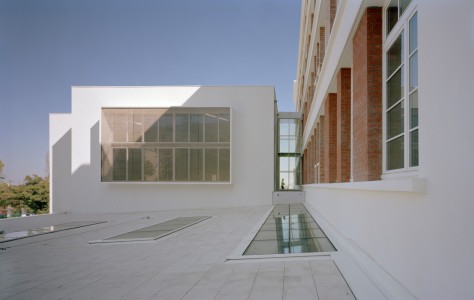
5 – The sanatorium is a rational architecture that had to be adapted to the actual fire and seismic regulations. The existing structure in masonry has been doubled for seismic reasons by a substantial steel structure.

The fire security passage runs along southern façade and coordinates the relationship between the building and the terrace garden. Source by Du Besset-Lyon.
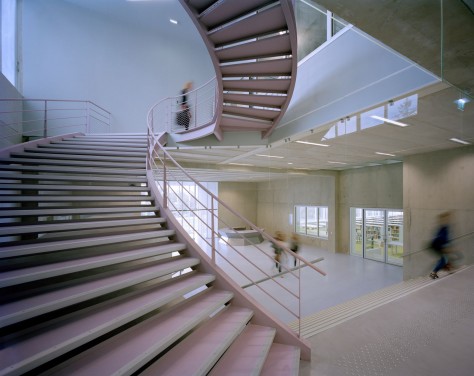
Location: Clermont-Ferrand, France
Architects: Du Besset-Lyon
Delegate Project Manager: Oppic
Structural engineers: Khephren Ingénierie
HVAC engineering: Espace Temps
Economist: JC Drauart
Acoustic expert: JP Lamoureux
Infrastructure engineers: Atpi Infra
Fire security expert: Casso & Associes
Competition: first prize winner of the competition on 2008
Client: Ministère de la Culture et de la Communication
Surface Area: 11 500 m2
Year: 2015
Photographs: Axel Dahl, Courtesy of Du Besset-Lyon

